The Tallahassee Museum’s 2017 red wolf pack could be getting much larger. But, like many human families, it’ll be growing from across a distance.
This is the nature of the Red Wolf Breeding program. Starting with so few wolves (fourteen in the late 1970s), achieving maximum genetic diversity is critical. This means that wolves are always on the move. Two years ago, dad and girl pup shipped off to different zoos to breed. Mom and the three boy pups stayed behind; but now, after three and a half years together, mom is moving on to breed one last time.
Mom birthed a litter before arriving at the Museum in late 2016, ahead of the spring breeding season. She now leaves for Kentucky to try for a third and final litter. I do feel a little sadness that our little family is breaking up and going their separate ways, but mom is reuniting with the father of her first litter. The program has reunions as well as separations.
We’re also losing the “shy pup,” who’s moving on to NC Zoo in North Carolina to breed as well. The Tallahassee Museum doesn’t publicize the names of the wolves, so we’ve referred to them based on observable characteristics. Shy pup hid the most, and was most likely to run into the den when visitors walked up the boardwalk.
The two remaining boy pups are now the senior red wolves at the Tallahassee Museum. And short-tailed pup, the first little pup out of the den when I first went to film footage of the new litter in 2017, might soon become “dad.”
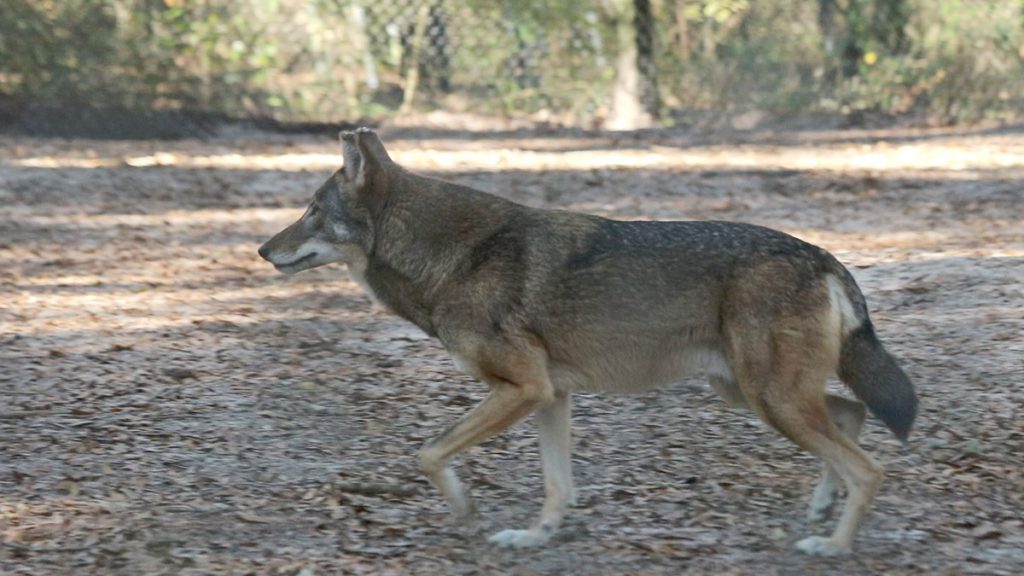
Meet the New “Mom,” and other changes
She’s not a mom, yet. This 6 year old female red wolf comes to the Tallahassee Museum from the Alexandria Zoological Park in Louisiana. She will join short-tailed pup in the main red wolf exhibit.
Breeding season starts in early spring, and so the new couple has three months or so to become acquainted. Observing them two days after her arrival, I see a lot of them running in circles. I notice a little bit of a track worn into the sand at the perimeter of the enclosure.
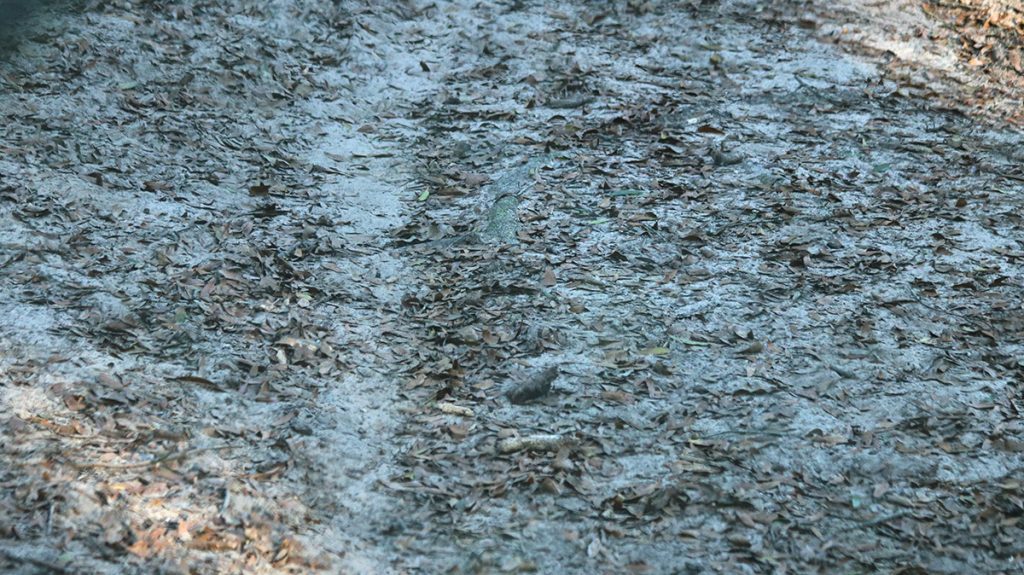
Occasionally, I see them stand together. She discreetly sniffs his rear once or twice. They’re still getting to know each other.
She’s not the only new female at the Museum. Visitors may have noticed the second red wolf exhibit behind the main one. In recent years, this had been occupied by two members of the 2005 Tallahassee Museum litter, a brother and sister. Each had been paired with other wolves over the years but never bred. They both passed away within the last year.
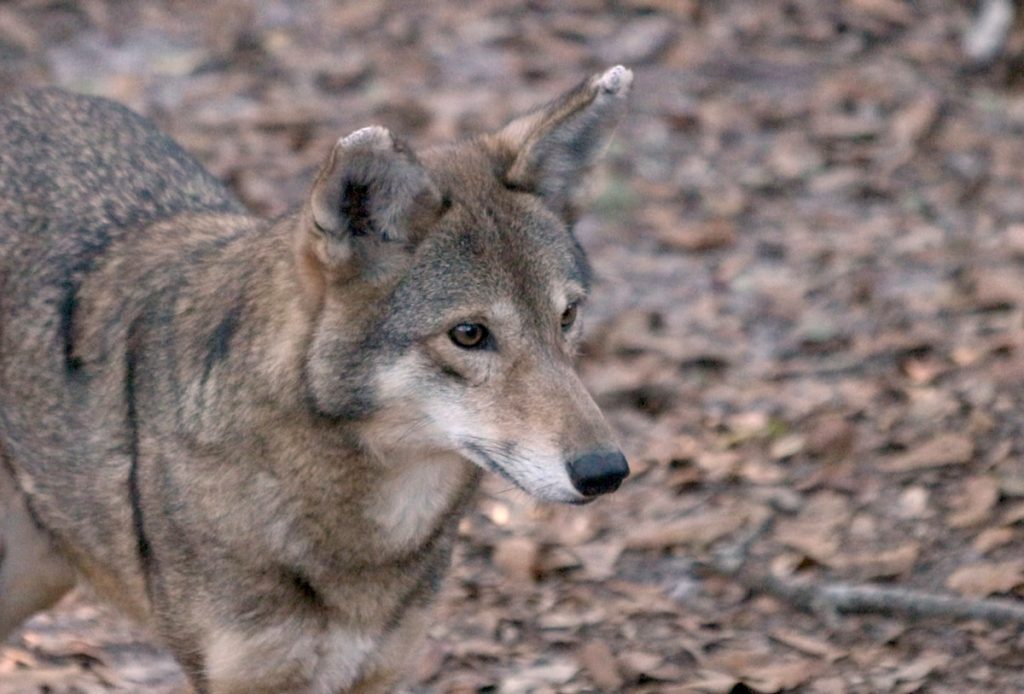
Now, crooked tail puppy is moving into the back exhibit. He will be joined by a ten year old female from Texas. She hasn’t bred before, so they’ll likely be companions. He may get a chance to breed later on.
By the end of spring 2021, 2017 mom and two of her pups might have new litters. The family we first met in 2017 will hopefully grow and we’ll see a new generation at the Tallahassee Museum.
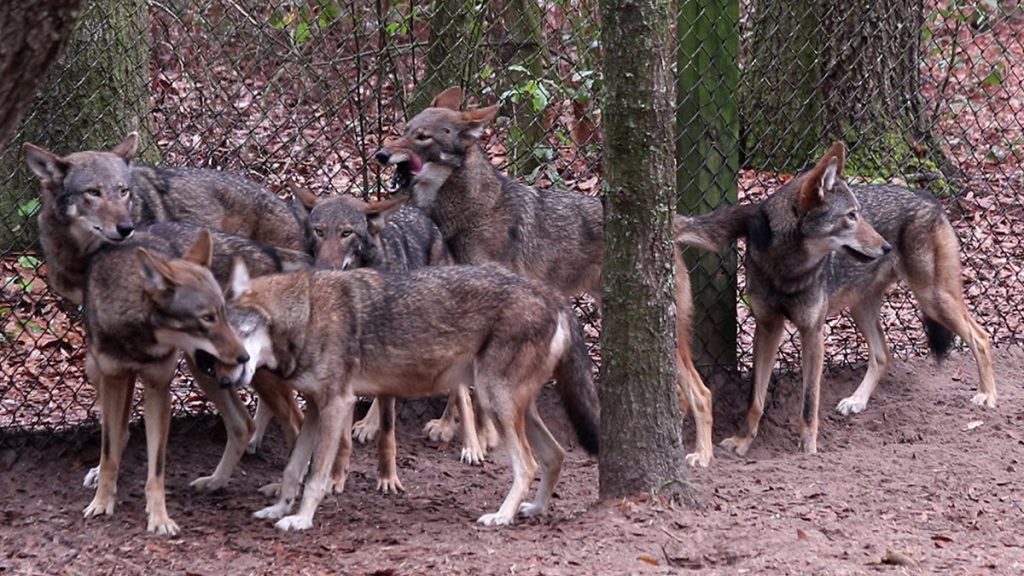
Tallahassee Museum 2017 Red Wolf Litter Timeline
- February 14, 2017 Red wolf breeding pair observed mating. Unlike domestic dogs, red wolves only mate once per season. So the pups where more than likely conceived on Valentine’s Day.
- March 24, 2017 WFSU shoots an interview with the Tallahassee Museum Animal Keeper staff about red wolves. The staff says they believe their female red wolf is pregnant.
- April 21, 2017 Mom gives birth to four pups: three boys and one girl.
- June 16, 2017 I film footage of the red wolf puppies for the first time. Because their parents were so wary of human visitors, the Museum closed off half of the boardwalk. Over their first few months, the pups mostly stayed in their den during business hours. The pups then emerged when the Animal Keeper staff drove off in their golf cart after the museum closed.
- April 2018 WFSU premieres a thirty minute documentary celebrating the first year of the puppies’ lives. Visiting once or twice a month, we gathered footage showing the wolves grow almost to adulthood.
- July 2018 The Tallahassee Museum animal staff returns from the Red Wolf SSP (Species Survival Plan) meeting. The SSP participants meet once a year to determine the new breeding pairs for the following year, and we learn that dad and girl pup are moving on to breed. Mom is given a contraceptive to prevent her from going into heat.
- October/ November 2020 Mom and shy pup move on to breed at other zoos. Two new females move in; one will form a breeding pair with short-tailed pup.
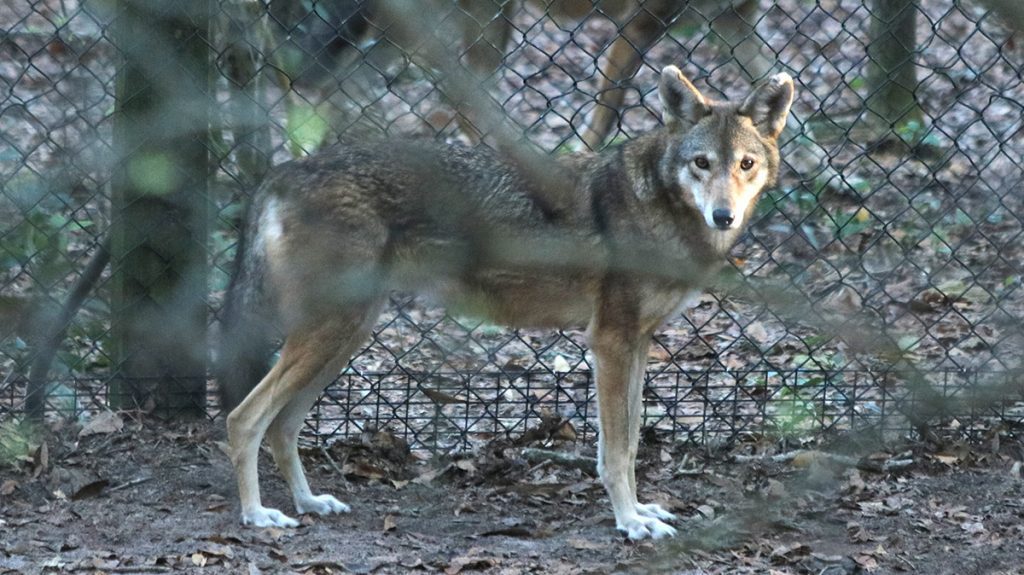
Why the Red Wolves’ Thanksgiving Zoom Might Be Awkward This Year
When I saw that the female came from the Alexandria Zoological Park, something sounded familiar. It is, in fact, where the 2017 dad went in 2018. In a little bit of a soap opera type twist, the new female was his breeding partner last year. “But nothing happened,” says Suzie Buzzo, Tallahassee Museum’s Animal Curator. “They didn’t breed.”
If she breeds with short-tailed pup, and his brother breeds in North Carolina, the family tree would have a couple criss-crossed branches. Shy pup, who shipped out within the last few weeks, has been paired with the new Tallahassee Museum female’s mother.
It may seem odd to pair them this way, and to keep shuffling partners. But the name of the game is preserving the DNA of this critically endangered species, which had once been an apex predator of the eastern United States. The SSP keeps pairing the healthiest, least related wolves to keep the population as genetically diverse as possible.
Busy Year for the Red Wolf SSP
After a couple of quiet years, the Tallahassee Museum has had a busy October/ November 2020.
“Once we got the breeding and transfer plan from the Species Survival Plan, we had to coordinate a lot of different moves.” Suzie says. “So the Tallahassee Museum, we had more moves than most institutions this year.”
The SSP meets every summer to determine parings. This year’s recommendations had the Museum’s animal staff criss-crossing the southeast, picking up and dropping off wolves. In the coming years there’s going to be more breeding, and more zoos housing red wolves.
The reason is that wild releases stopped a few years ago, and the wild population is all but gone.
“I believe there were 35 recommendations this year,” Suzie says. “They don’t all work out, but we’re hoping to have as many litters as possible, because they need to increase the captive population.”
The SSP wants the captive population to stay above a minimum of 250, with the goal of increasing to 330 within ten years. Suzie says that eight new zoos joined the program. The US Fish and Wildlife Service is also giving grants to facilities that might house red wolves. The grants could be used to increase capacity at current red wolf zoos, like the Tallahassee Museum.
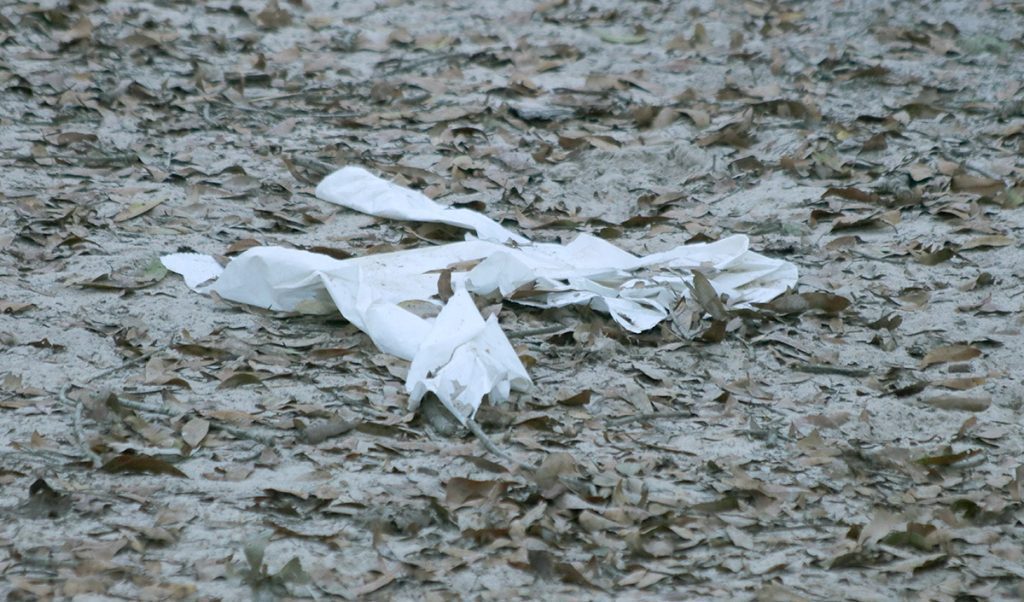
Environmental Enrichment | Keeping Wolves Wild
Standing on the boardwalk in the hour before the Tallahassee Museum opens, I pan my camera across the enclosure. I notice one or two things that look out of place, and I immediately recognize the handiwork of the animal staff.
The first such thing I notice is some torn paper. I can only imagine there was once meat or fish in that paper, from one of many odd treats prepared for the wolves.
We learned about environmental enrichment while making the red wolf puppy documentary in 2018. To keep these captive animals’ instincts sharp, the staff prepares strange treats, like blood popsicles or meat filled pumpkins. They spray urine scent from prey species, or from rival predator species. They leave old Christmas trees and giant hollow logs in the enclosures. Anything new or puzzling keeps them engaged, or even on edge. Just like they’d be in the wild.
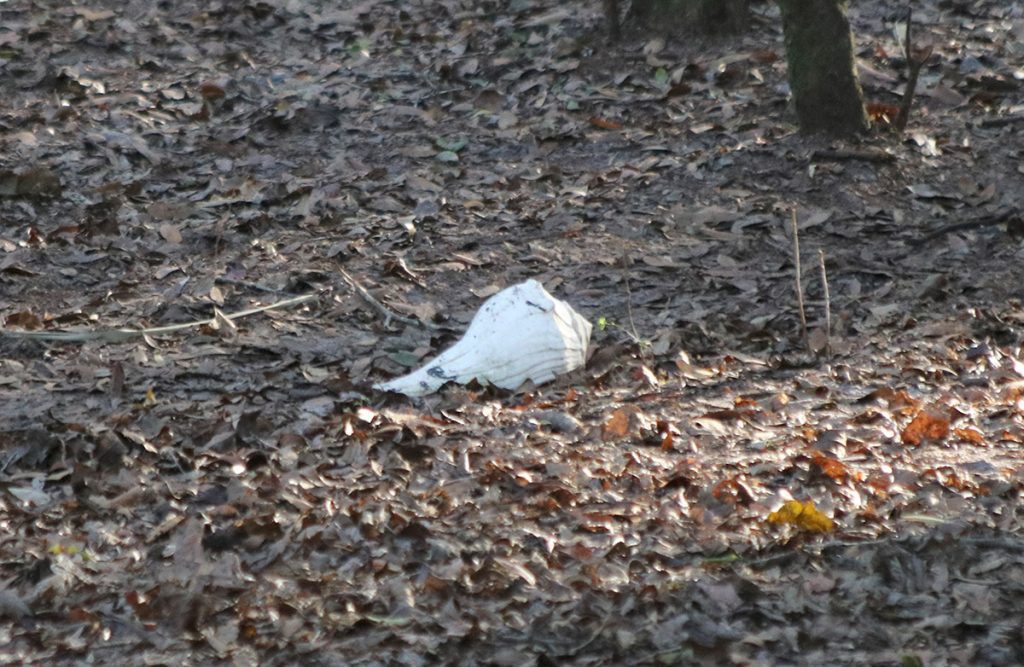
Next, I spot a lightning whelk shell. I think of how likely a red wolf on Saint Vincent Island would be to find one on the beach.
Next, animal keeper Laura Augustin comes in and leaves a clump of feathers by the den. After she leaves, the new female sniffs and rubs her head on them (you can see this in the video).
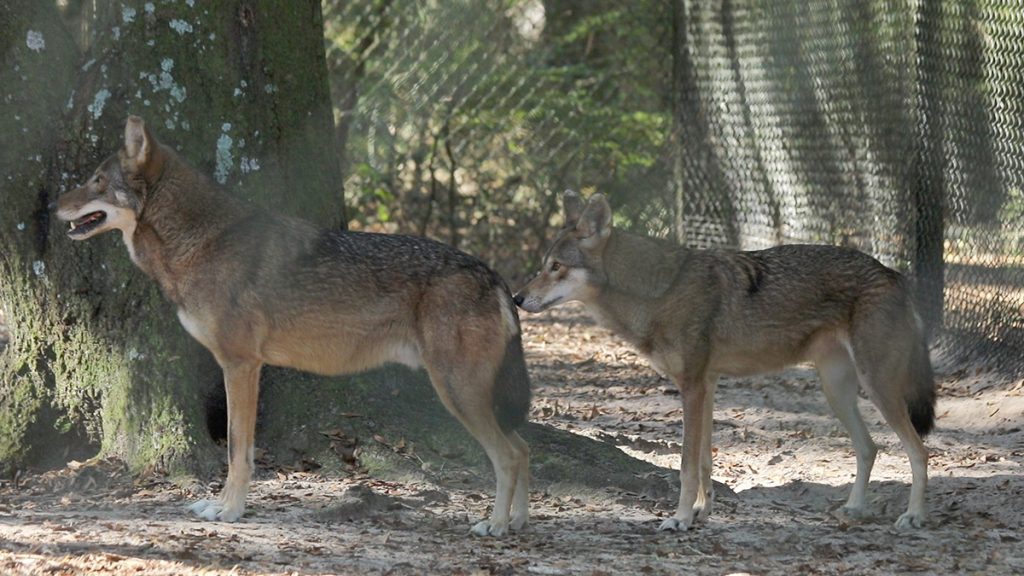
I see other signs of wild behavior from the wolves. When the two of them stand together, the female sniffs short-tailed pup’s rear end. They get to know each other much like dogs might. I also see recently dug holes. Suzie had been told that the new female was a digger, which is how mothers make dens for their pups. Large underground dens make it difficult for the staff to care for new pups, but she is showing parental behavior. It’s a good sign.
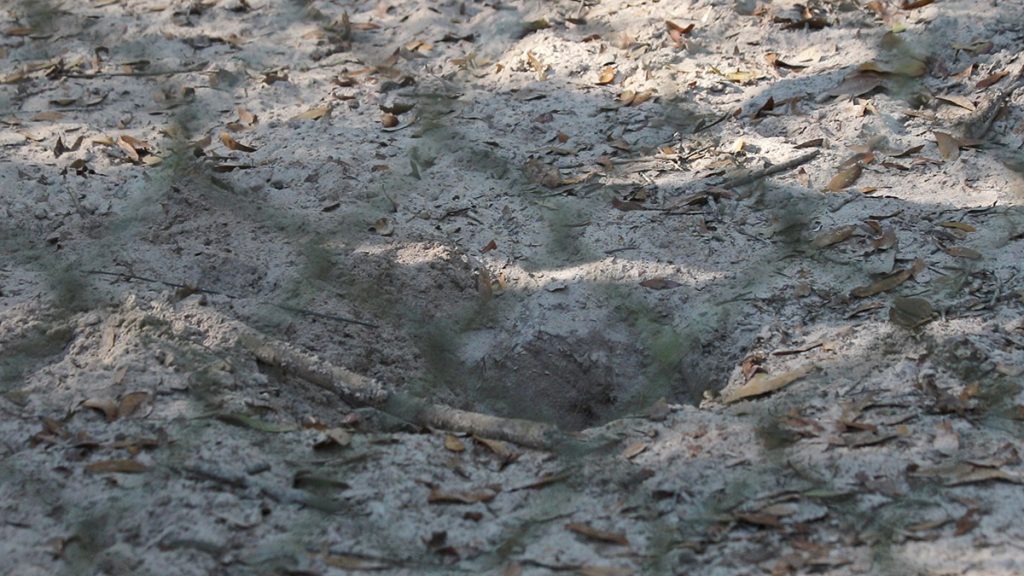
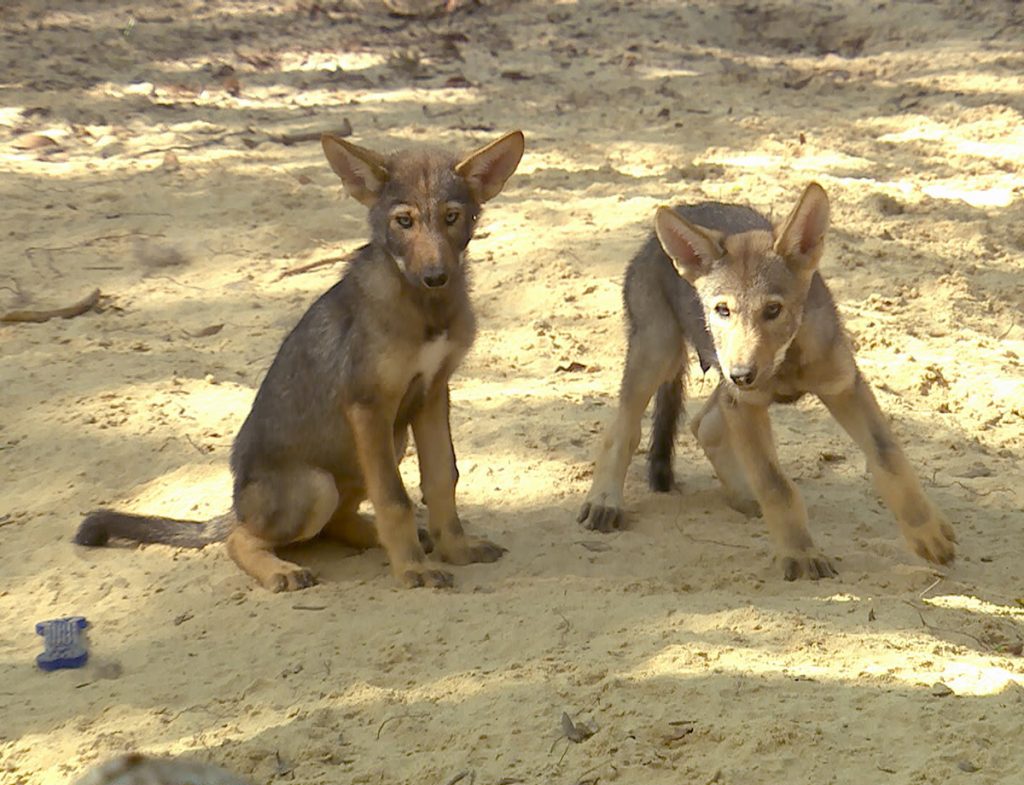
Red Wolves in North Florida
Red wolves were once apex predators in north Florida before being hunted to near extinction across the eastern United States. The Red Wolf Species Survival Plan oversees a captive breeding program to preserve the species, of which the Tallahassee Museum is a longtime participant.
The goal of the SSP was to breed wolves that would eventually be released into the wild, into two National Wildlife Refuges on North Carolina’s Albermarle Peninsula. One way to transition captive wolves to wild living was on Island Propagation sites, like Saint Vincent Island in our area.
We’ve documented the 2017 Tallahassee Museum litter since mom was pregnant with them. In 2017, we also took a look at the wolves on Saint Vincent Island. Those wolves are elusive, and we didn’t see them, but while visiting the island for a story on sea level rise, author Susan Cerulean spotted red wolf tracks on the beach.
Wild releases stopped after conflicts with North Carolina landowners neighboring the wild population. The Saint Vincent red wolves are among the few to hunt for food and raise their young away from human eyes.
